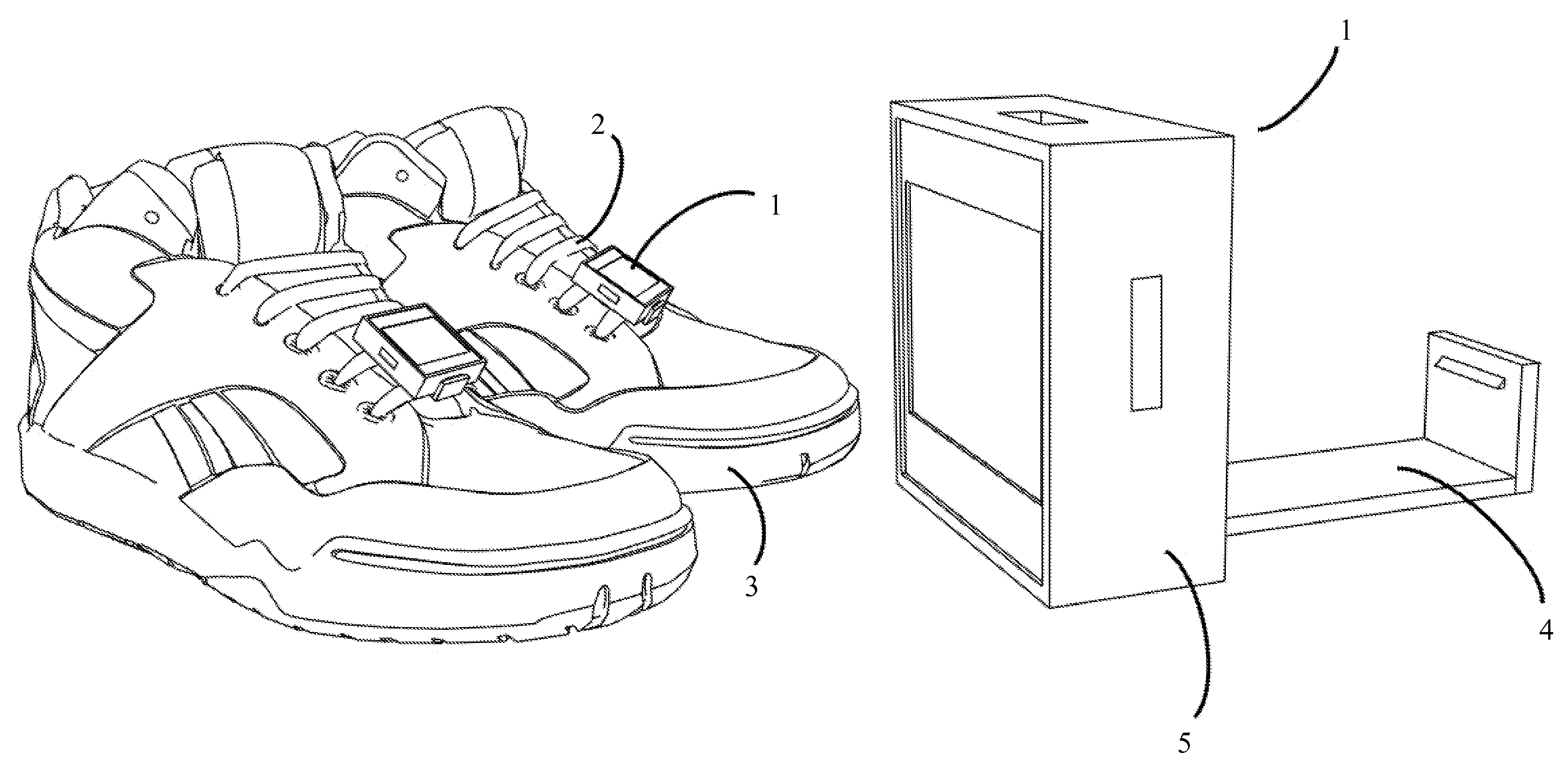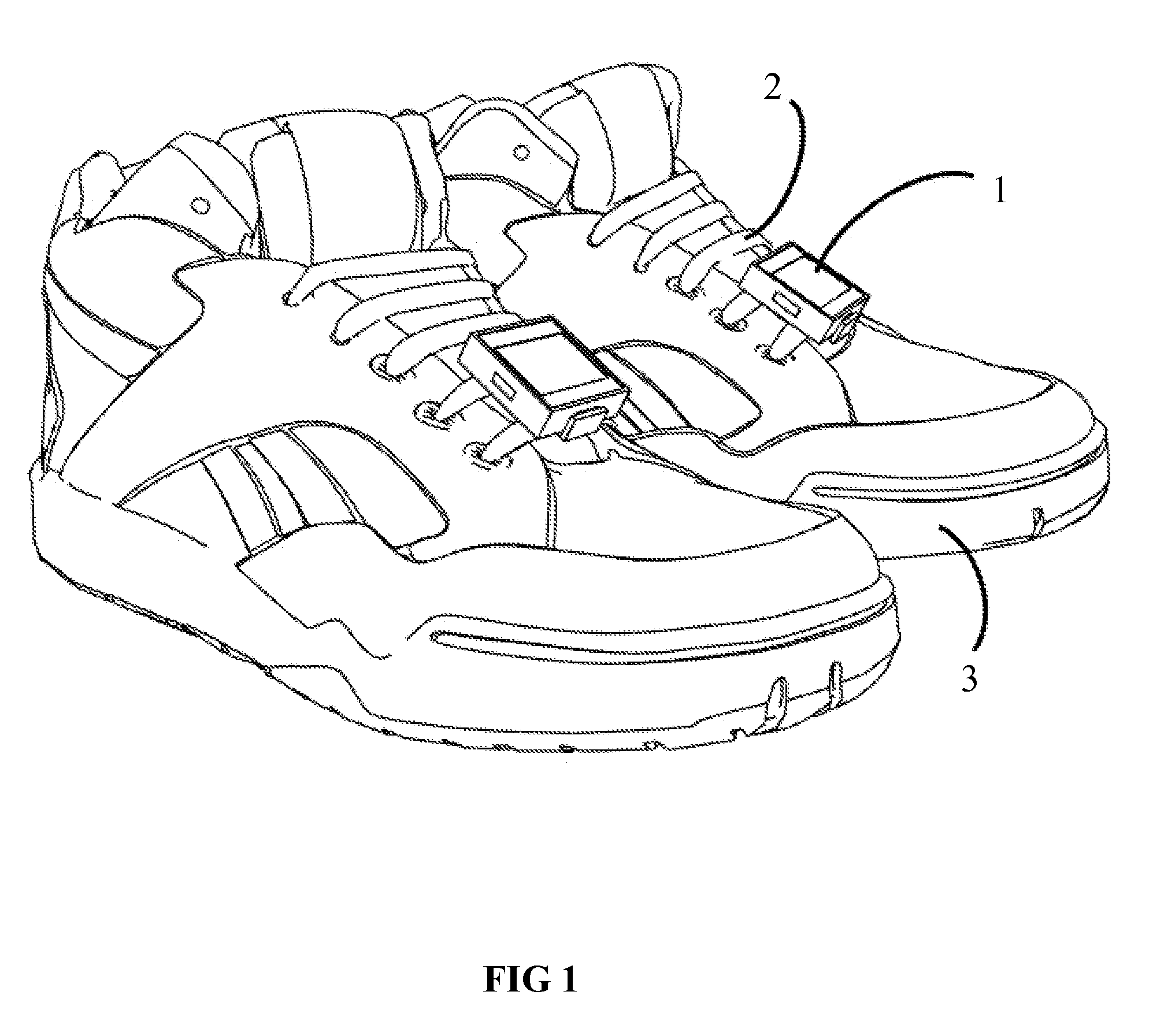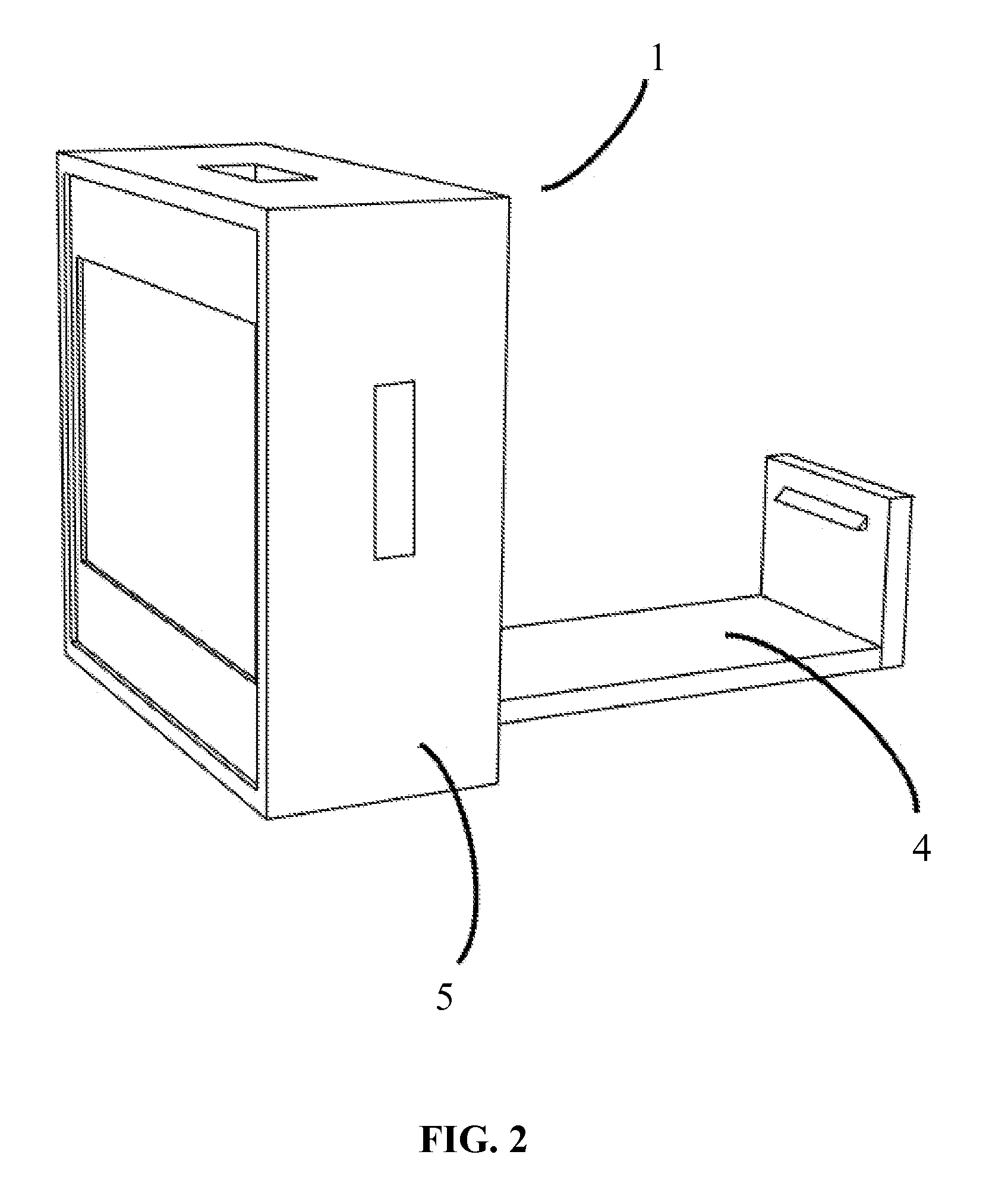Modular footwear display apparatus
a technology of footwear display and module, which is applied in the field of footwear display apparatus, can solve the problems of limited flexibility of these devices to integrate with existing shoes in a non-destructive, easily customizable and broadly ornamental manner, and the removal of the shield may require the removal of the shoe and the laces, so as to achieve more customization of the appearance of footwear, easy management of the display, and easy to control the effect of the
- Summary
- Abstract
- Description
- Claims
- Application Information
AI Technical Summary
Benefits of technology
Problems solved by technology
Method used
Image
Examples
Embodiment Construction
[0038]One or more modular footwear apparatus 1 is designed to attach on to the laces 2 of a shoe 3 or pair of shoes and display images as a reflection of a desired customized display. Each modular footwear apparatus 1 is generally composed of two broad elements an attachment bar element 4 and a display element 5.
[0039]The attachment bar 4 is an L-shaped element composed of an applicator section 6 which is attached to a tab section 7. The attachment bar may be made of a sturdy and flexible material, such as plastic or another synthetic material. It should have a thickness dimension 8 such that it provides resistance to bending, cracking or snapping when pressure is applied during it's use. Also, it should have a width dimension 9 such that it is able to be comfortably manipulated with the fingers and covers a broad area of the shoe's tongue when it is inserted below the laces. It's length dimension 10 should be long enough to extend beyond the display device, but close enough to form...
PUM
 Login to View More
Login to View More Abstract
Description
Claims
Application Information
 Login to View More
Login to View More - R&D
- Intellectual Property
- Life Sciences
- Materials
- Tech Scout
- Unparalleled Data Quality
- Higher Quality Content
- 60% Fewer Hallucinations
Browse by: Latest US Patents, China's latest patents, Technical Efficacy Thesaurus, Application Domain, Technology Topic, Popular Technical Reports.
© 2025 PatSnap. All rights reserved.Legal|Privacy policy|Modern Slavery Act Transparency Statement|Sitemap|About US| Contact US: help@patsnap.com



